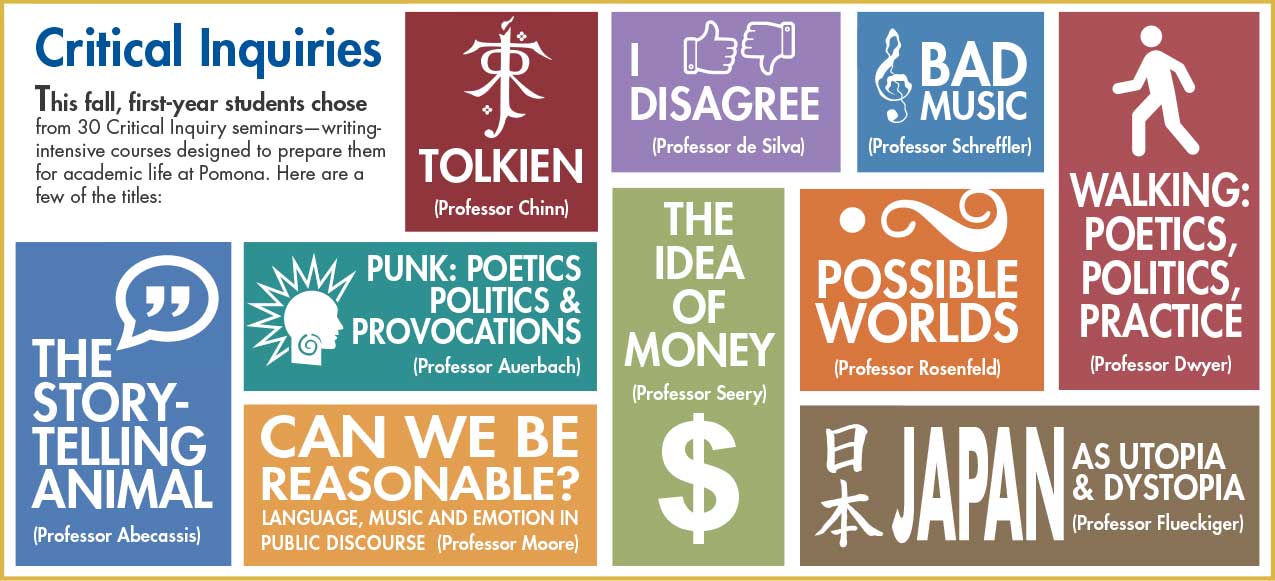 Spring is here, and the Organic Farm is bustling, as Pomona students welcome the season by following Voltaire’s advice to “tend your garden.” According to Farm Manager Scott Fleeman, March harvests have already included kale, collards, broccoli, Swiss chard, radishes, snap peas, fava beans, bunching onions and tangerines, as well as the first artichokes. Here’s a partial harvest schedule for the rest of the spring:
Spring is here, and the Organic Farm is bustling, as Pomona students welcome the season by following Voltaire’s advice to “tend your garden.” According to Farm Manager Scott Fleeman, March harvests have already included kale, collards, broccoli, Swiss chard, radishes, snap peas, fava beans, bunching onions and tangerines, as well as the first artichokes. Here’s a partial harvest schedule for the rest of the spring:
Pomoniana
Tend Your Garden
Michael J. Fox on Optimism
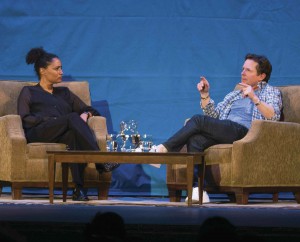
“I just feel like if you throw a penny in the air a hundred times, at least 51 times it’s going to come up heads. It’s not that I’m blind to the possibilities. I’m not reckless, and I don’t put my family in jeopardy because—’Don’t worry. It’ll be okay. It’s just a bear. It’ll be okay. We’ll make friends.’ I can be pragmatic and realistic too, but I do believe that if we let it happen, it’ll happen the right way. And the times it doesn’t make you grateful for the times it does.”
—Actor, author and activist Michael J. Fox
in conversation with Neuroscience Professor Nicole Weekes
at Bridges Auditorium, Feb. 12, 2016
10-Minute Theatre
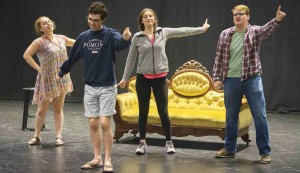 Family Weekend this year featured the world premiere of five new plays—each no more than 10 minutes long. The plays, written by members of the 5-college community around the theme of self-discovery, were all part of the eighth annual 10-Minute Play Festival, sponsored by Pomona’s Department of Theatre and Dance, organized by Carolyn Ratteray, visiting assistant professor of theatre and dance, who said the plays ranged “from the silly to the absurd, as well as the moving and the heartfelt.” At right, Peter Brown ’15 directs a group of Pomona actors in “While Away,” his play about three siblings dealing with the aftermath of their grandmother’s death, simultaneously bonding and fighting over her less-than-perfect legacy. Pictured, from left, are Rachel Tils ’19, Brown, Barbara Peisch ’19 and Ben Hogoboom ’19.
Family Weekend this year featured the world premiere of five new plays—each no more than 10 minutes long. The plays, written by members of the 5-college community around the theme of self-discovery, were all part of the eighth annual 10-Minute Play Festival, sponsored by Pomona’s Department of Theatre and Dance, organized by Carolyn Ratteray, visiting assistant professor of theatre and dance, who said the plays ranged “from the silly to the absurd, as well as the moving and the heartfelt.” At right, Peter Brown ’15 directs a group of Pomona actors in “While Away,” his play about three siblings dealing with the aftermath of their grandmother’s death, simultaneously bonding and fighting over her less-than-perfect legacy. Pictured, from left, are Rachel Tils ’19, Brown, Barbara Peisch ’19 and Ben Hogoboom ’19.
It’s Lonely at the Top

There’s no modest way to say it. According to Forbes magazine, Pomona College is now #1 among all colleges and universities in the country.
Really.
When Forbes released its “America’s Top Colleges 2015” issue earlier this year, to the surprise of many across the country and the delight of Sagehens everywhere, Pomona topped a distinguished list that went on to include #2 Williams, #3 Stanford, #4 Princeton, #5 Yale and a lot of other amazing institutions. (Harvard is in there somewhere.)
Forbes explains that their rankings differ from other college rankings, in part, due to their emphasis on outcomes, including amounts of student debt, graduation rates and measures of student satisfaction and career success.
“While the cost of U.S. higher education escalates, there’s a genuine silver lining in play,” explains Forbes. “A growing number of colleges and universities are now focusing on student-consumer value over marketing prestige, making this a new age of return-on-investment education.”
Of course, we all know ratings are overrated. Then again, what’s wrong with a few hard-earned bragging points?
Certified Platinum
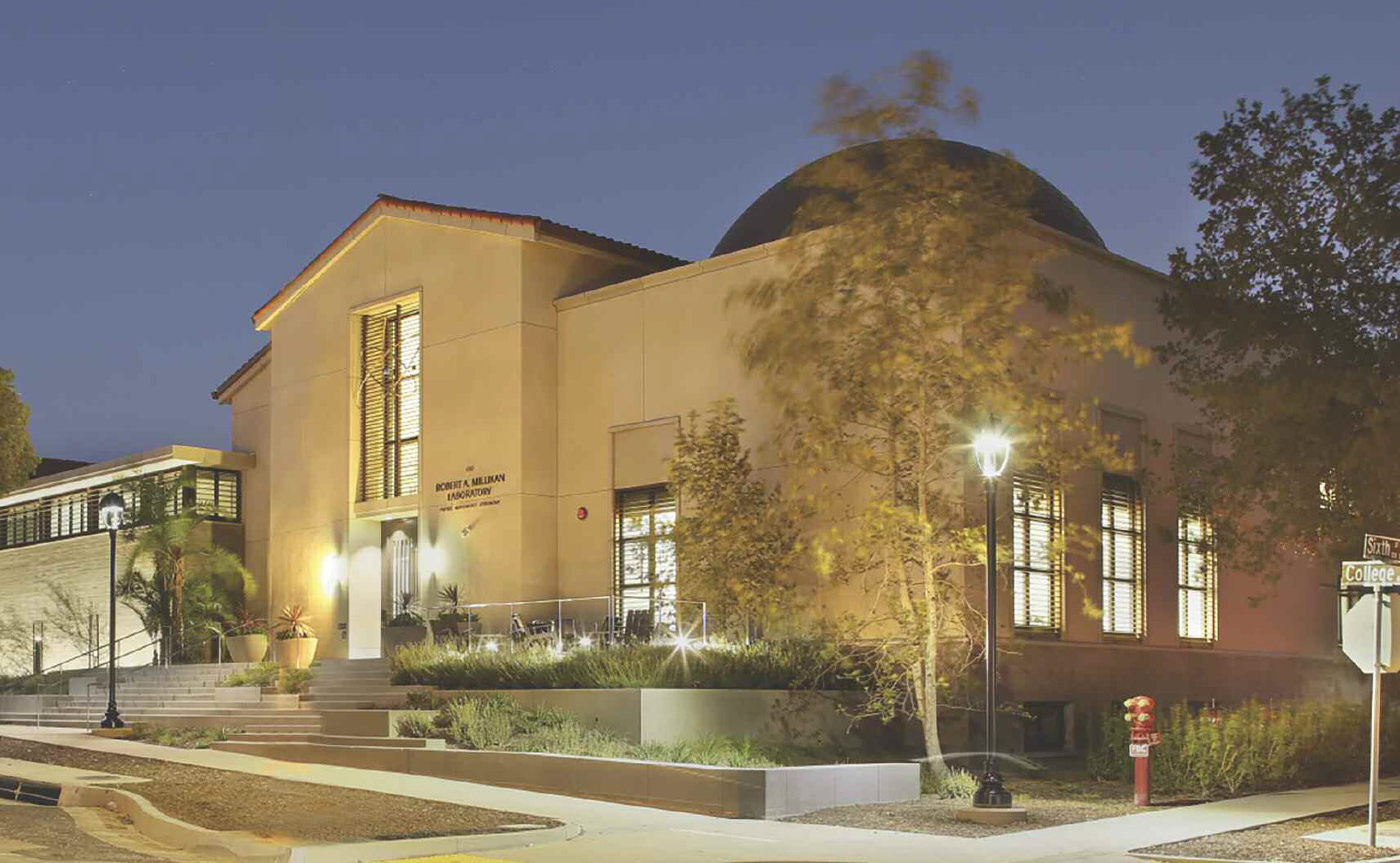
The newly rebuilt Millikan Laboratory and Andrew Science Hall have been certified LEED Platinum, the highest rating for building sustainability standards, joining nine other Pomona College buildings that have achieved LEED (Leadership in Energy & Environmental Design) status. As Pomona’s first LEED Platinum science/laboratory building, the complex joins just four other science buildings with that rating in all of Southern California.
“Obtaining a LEED Platinum rating is much more difficult in a science building because of the specialized systems required by laboratory facilities,” says Robert Robinson, assistant vice president of facilities and campus services. Millikan’s numerous green features encompass landscaping, lighting, materials and alternative energy.
Here’s the full list of LEED certified buildings on the Pomona College campus today:
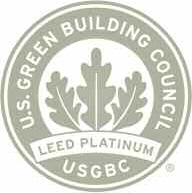
PLATINUM
Millikan Laboratory and Andrew Science Hall, 2015
Pomona Residence Hall, 2011
Sontag Residence Hall, 2011
 GOLD
GOLD
Studio Art Hall, 2015
Grounds I, 2013
Grounds II, 2013
Grounds III, 2013
Edmunds Hall, 2007
Lincoln Hall, 2007
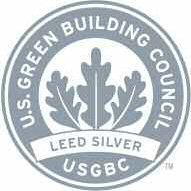
SILVER
Richard C. Seaver Biology, 2006
(In addition, the South Campus Parking Structure (2011) was built to LEED Gold+ standards even though parking structures do not qualify for certification.)
Supreme Court Justice Sonya Sotomayor
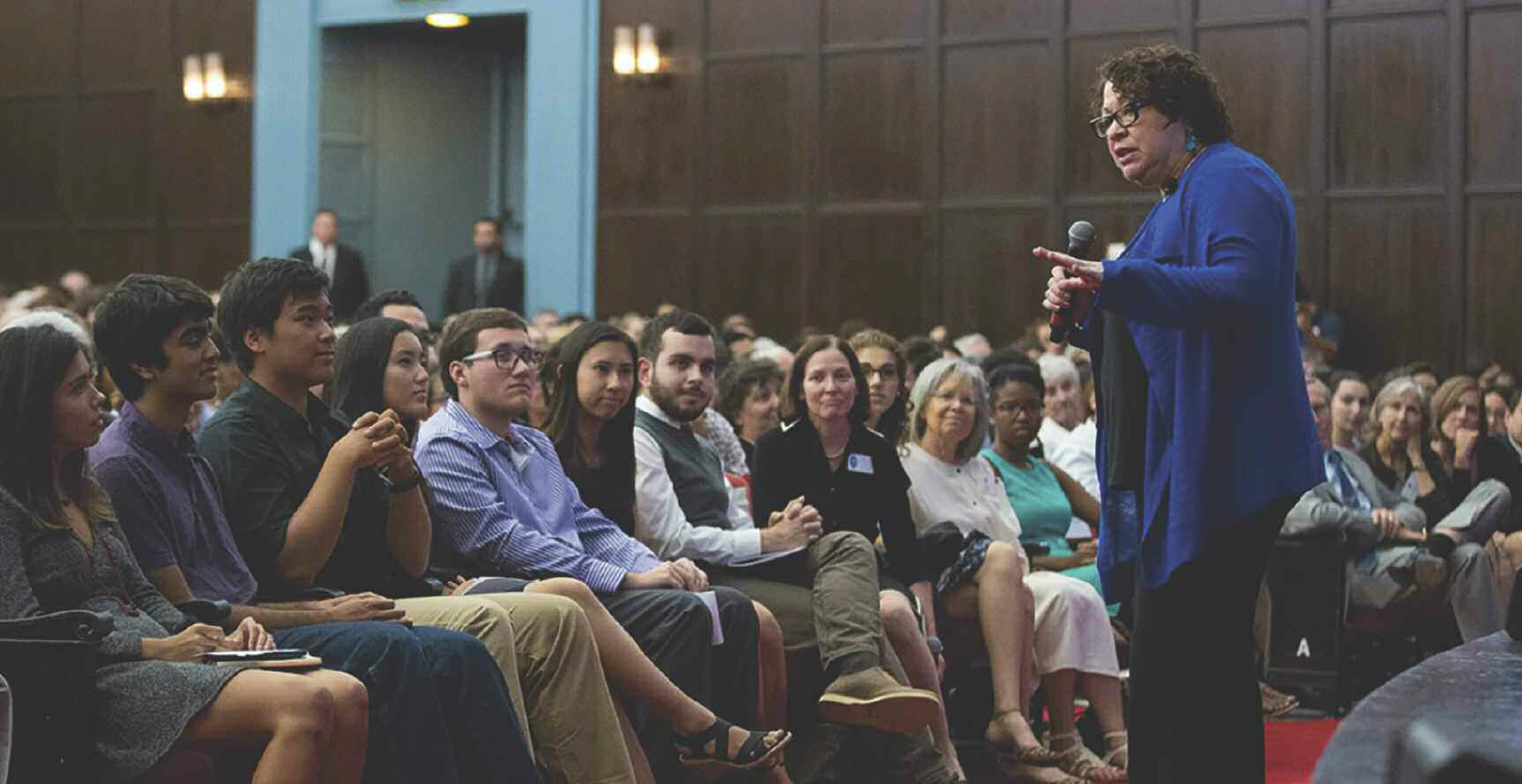 If you’re comparing yourself to others, you’re often going to find yourself short on something, especially if they have a background that’s different from your own. … Don’t measure yourself against others. Measure yourself against you. How much have you done to get where you are? And take pride in that, because that adds to the richness of your university and the place that you’re in.
If you’re comparing yourself to others, you’re often going to find yourself short on something, especially if they have a background that’s different from your own. … Don’t measure yourself against others. Measure yourself against you. How much have you done to get where you are? And take pride in that, because that adds to the richness of your university and the place that you’re in.
—Supreme Court Justice Sonya Sotomayor during a visit to campus in October
Project #50
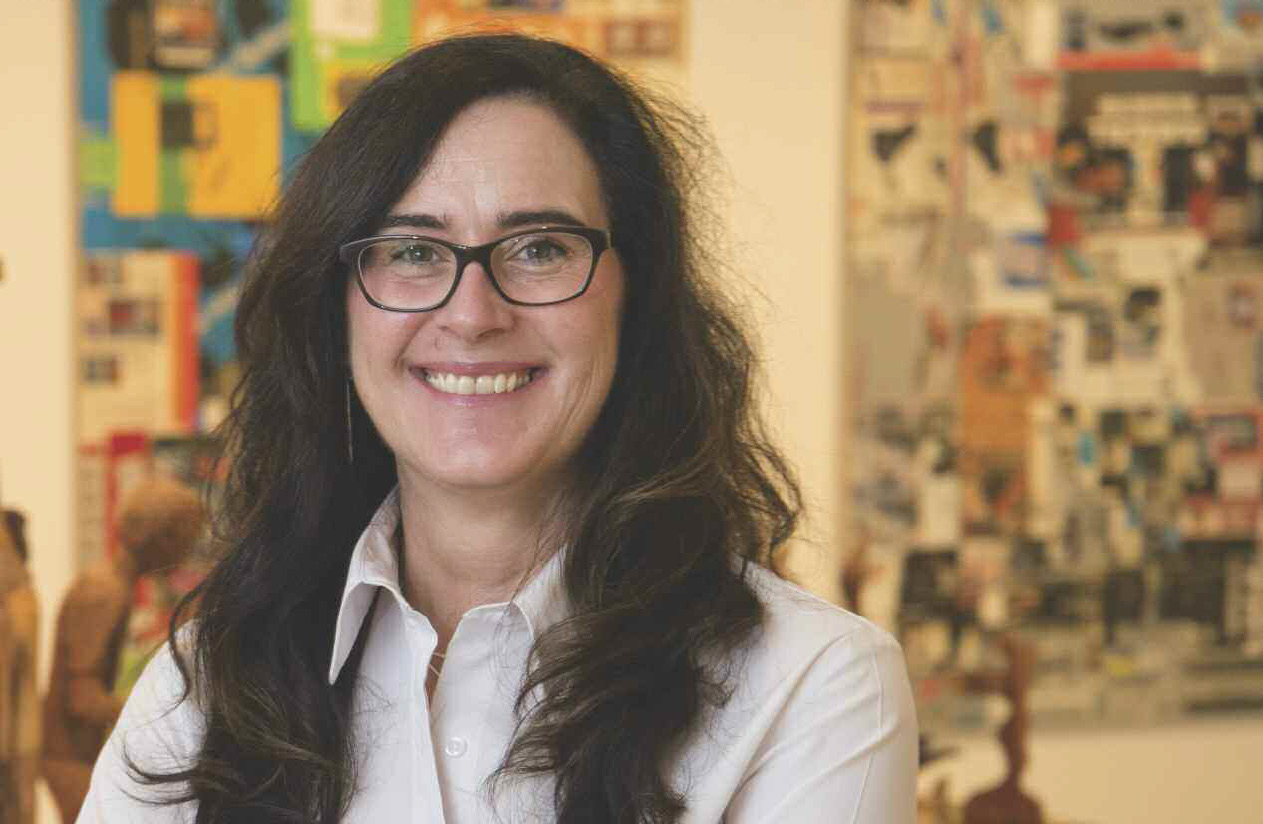 For nearly 20 years, the Pomona College Museum of Art has been home to a series of exhibitions designed to turn a spotlight on emerging and underrepresented artists from Southern California. After 49 exhibits in what became known as the Project Series, senior curator Rebecca McGrew ’85 decided to take it up a notch for Project #50 by showcasing seven artists in concurrent solo exhibitions in “R.S.V.P Los Angeles,” which will be open through Dec. 19. “I envisioned collaborating directly with the artists who themselves were engaging with the contemporary cultural moment through a rich, boundary-blurring dialogue of art, culture, history, social issues, politics, music, science and more,” says McGrew on how the Project Series was conceived in 1999. Many of the artists who have been featured in the series have gone on to major national recognition.
For nearly 20 years, the Pomona College Museum of Art has been home to a series of exhibitions designed to turn a spotlight on emerging and underrepresented artists from Southern California. After 49 exhibits in what became known as the Project Series, senior curator Rebecca McGrew ’85 decided to take it up a notch for Project #50 by showcasing seven artists in concurrent solo exhibitions in “R.S.V.P Los Angeles,” which will be open through Dec. 19. “I envisioned collaborating directly with the artists who themselves were engaging with the contemporary cultural moment through a rich, boundary-blurring dialogue of art, culture, history, social issues, politics, music, science and more,” says McGrew on how the Project Series was conceived in 1999. Many of the artists who have been featured in the series have gone on to major national recognition.
Celebrating the Class of 2015
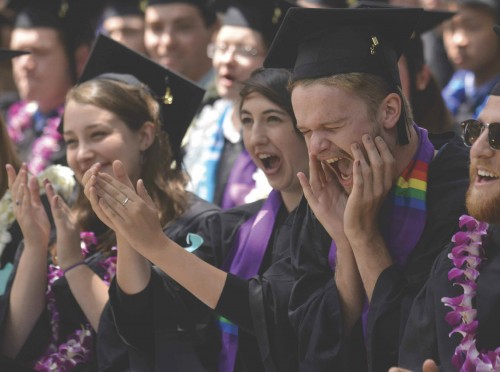
Members of the Class of 2015 show support for a classmate who just received a diploma during Pomona’s 122nd Commencement in May. During the ceremony, Michael Dickerson ’01, Andrew Hoyem ’57, Judge Stephen Reinhardt ’51, and France Córdova spoke and received honorary degrees from the College. Videos of the speakers are available at www.pomona.edu/events/commencement/archive/2015.aspx.
Under Prometheus
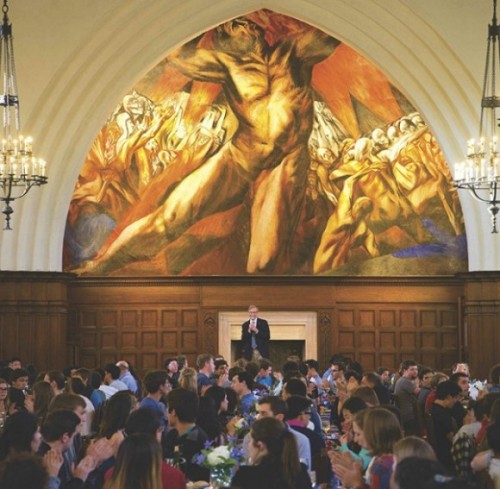
President David Oxtoby welcomes the members of the Class of 2015 to a Senior Dinner on April 7 beneath José Clemente Orozco’s fresco of Prometheus in Frary Hall.
